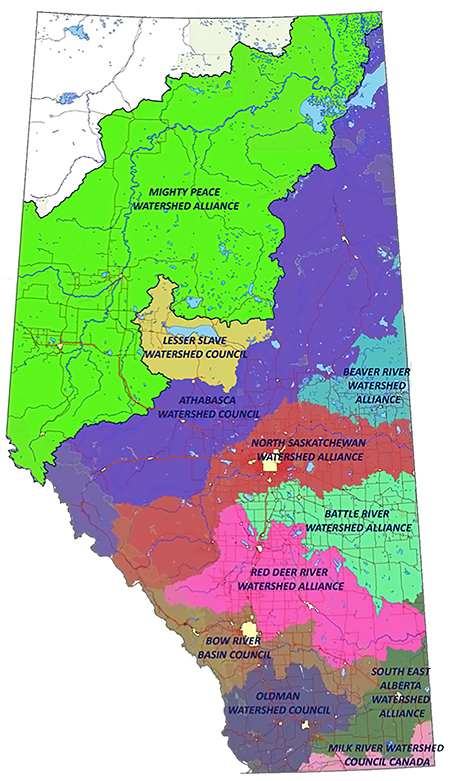Watersheds within a WatershedA Natural Management ApproachThe Water for Life Strategy applies a natural organizing principle — the watershed — to managing the province's water. There are seven major river watersheds in Alberta: Hay, Peace and Slave, Athabasca, Beaver, North Saskatchewan, South Saskatchewan, and Milk, each with its own distinct water management challenges. Because those most affected by water-related challenges are often best equipped to find solutions, the Strategy called for the creation of 11 community-based Watershed Planning and Advisory Councils (WPACs — see map at right).While final responsibility for implementing the Water for Life strategy rests with the Government of Alberta, participation from citizens, communities, industries, non-governmental organizations and government is essential. The Mighty Peace Watershed Alliance is the designated WPAC for Alberta's portions of the Mighty Peace River watershed. What is a Watershed?A watershed channels water from precipitation, runoff and tributaries into a particular lake, river or set of rivers. Every creek, stream, river and lake in the drainage area, as well as all of the surface lands, is part of a watershed. Watersheds are separated by mountains, ridges and hills. The largest watersheds are often defined by the ocean into which they drain. In Canada, there are five main watersheds: Pacific Ocean, Hudson Bay, Atlantic Ocean, Gulf of Mexico, and Arctic Ocean. The Arctic watershed is the largest in Canada, occupying almost a fifth of the country. The Mackenzie, into which the Peace River eventually flows, is the main river. MORE ABOUT THESE WATERSHEDS IS AVAILABLE AT:
rivers.alberta.ca/ |
 |
| © 2015 Mighty Peace Watershed Alliance | CONTACT THE ALLIANCE | NEXT PAGE: Sub-Watersheds |